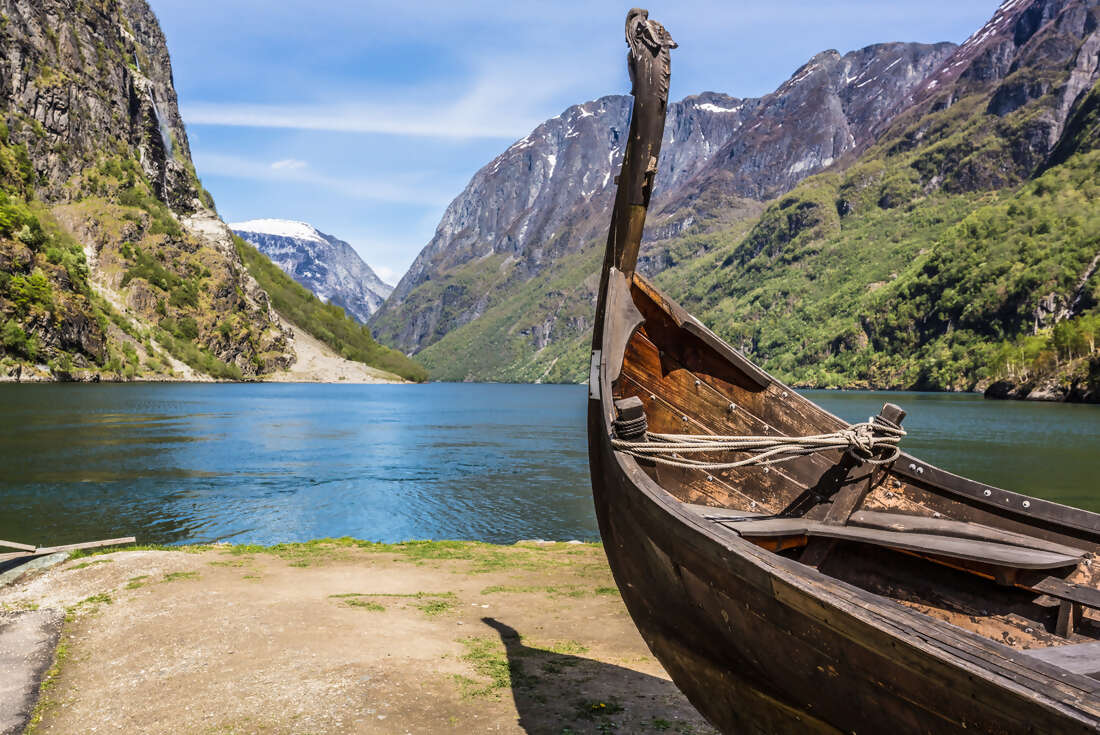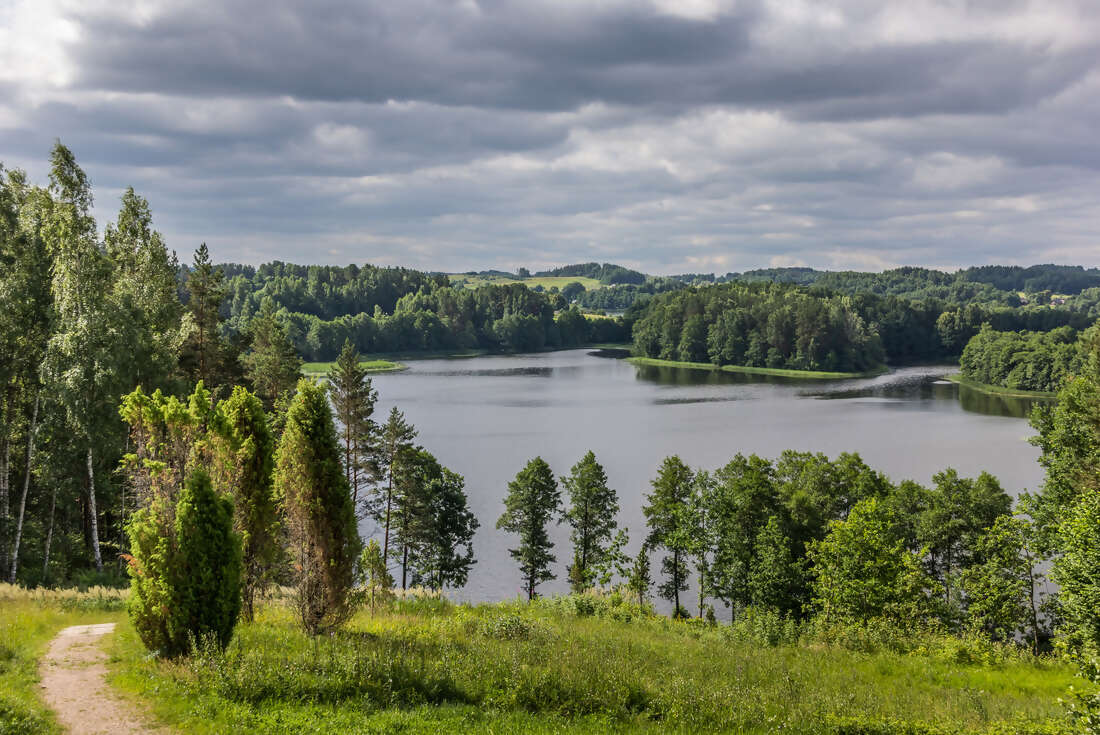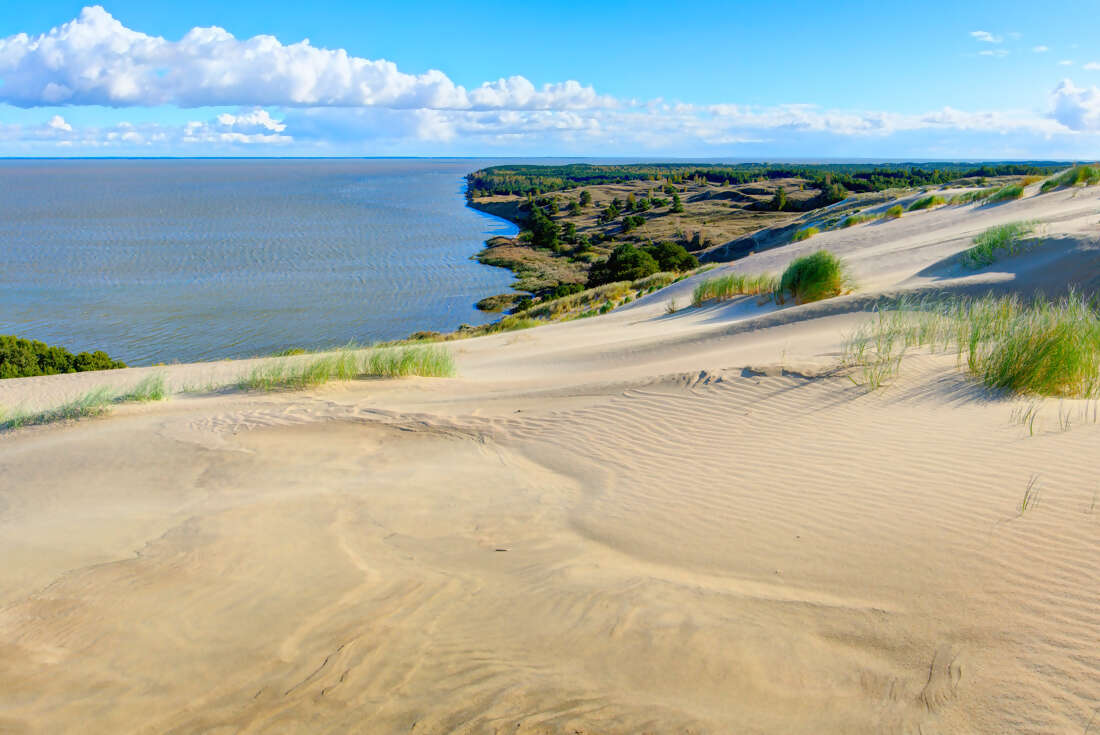 Explore the highlights of Scandinavia before travelling south into the Baltic states on this epic 32-day adventure through northern Europe. As well as hitting the hubs of Oslo, Helsinki and Stockholm, discover the lesser-known but no less fascinating cities of Riga and Klaipeda, as well as Aukstaitijia and Curonian Spit national parks. The countries Estonia, Latvia and Lithuania are a few of the continent’s last true undiscovered secrets – the fairy-tale turrets and cobbled lanes of old Tallinn, the baroque flair of Vilnius and the poignant history of Soviet occupation are not to be missed. This really is a one-of-a-kind itinerary.
Explore the highlights of Scandinavia before travelling south into the Baltic states on this epic 32-day adventure through northern Europe. As well as hitting the hubs of Oslo, Helsinki and Stockholm, discover the lesser-known but no less fascinating cities of Riga and Klaipeda, as well as Aukstaitijia and Curonian Spit national parks. The countries Estonia, Latvia and Lithuania are a few of the continent’s last true undiscovered secrets – the fairy-tale turrets and cobbled lanes of old Tallinn, the baroque flair of Vilnius and the poignant history of Soviet occupation are not to be missed. This really is a one-of-a-kind itinerary. Highlights
Explore Copenhagen like a local and hop on a bike. There is no better way to see the major sites, as well as explore hidden corners of this beautiful city.
Aukstaitija National Park offers unique opportunities for both activity and relaxation. Canoe across pristine lakes, indulge in home-cooked meals and cleanse yourself in a traditional sauna.
Norway's fjords feature some of the most stunning scenery on Earth. Cruise past waterfalls and snow-capped peaks through the narrow Naeroyfjord
Discover Stockholm's maritime history at the Vasa Museum, which houses an original wooden war ship from 1628. This impressive vessel gives you a rare glimpse into the naval power Sweden was once famous for.
With its perfectly preserved medieval wall and watchtowers, Tallinn's quaint Old Town is a great place to explore with your small group.







- You will visit the following places:
-

Copenhagen
Copenhagen is the capital and largest city of Denmark. This "friendly old girl of a town" is big enough to be a metropolis with shopping, culture and nightlife par excellence, yet still small enough to be intimate, safe and easy to navigate. Overlooking the Øresund strait with Sweden just minutes away, it is a cultural and geographic link between mainland Europe and Scandinavia. This is where old fairy tales blend with flashy new architecture and world-class design; where warm jazz mixes with cold electronica from Copenhagen's basements. You'll feel you've seen it all in a day, but could keep on discovering more for months. Copenhagen is considered a very liveable place because of its cleanliness. It’s considered as one of the very environmentally friendly cities because its harbour can be swum in and about a third of the city’s people use bicycles as their means of transportation. In their downtown area, the places to visit and to be entertained at are the Tivoli gardens and the Town Hall Square. If you want the very cultural and scenic areas the places to see are the Marble church, the Rosenborg castle, and the Christiansborg.
-

Gothenburg
Gothenburg is the second-largest and a major city in Sweden, situated off the Göta älv river on the country's west coast. The City of Gothenburg was founded in 1621 by King Gustavus Adolphus of Sweden. An important seaport, it's famed for its Dutch-style canals and leafy boulevards like the Avenyn, the city's main thoroughfare, lined with many cafes and shops.
-

Oslo
Oslo is a county and municipality, as well as the capital and largest city in Norway. Oslo was established as a municipality on 1 January 1838. Founded around 1048 by King Harald III "Hardraade" of Norway, the city was largely destroyed by fire in 1624. The Danish–Norwegian king Christian IV moved the city, rebuilding it closer to Akershus fortress, as Christiania (briefly also spelt Kristiania). In 1925, the city reclaimed its original Norwegian name, Oslo. The diocese of Oslo is one of the five original dioceses in Norway, which originated around the year 1070.
-

Bergen
Bergen is the second largest city in Norway with a population of 261,600 as of April 31, 2011. Bergen is the administrative centre of Hordaland county. Greater Bergen or Bergen Metropolitan Area as defined by Statistics Norway, has a population of 386,900 as of April 31, 2011. Bergen is located in the county of Hordaland on the south-western coast of Norway. It is an important cultural hub in its region, recognized as the unofficial capital of Western Norway and sometimes also referred to as the Atlantic coast capital of Norway. The city was one of nine European cities honoured with the title of European Capital of Culture in the Millennium year.
-

Stockholm
Stockholm - Sweden's capital and largest city, and the most populous city in the Nordic region. Without a doubt, Stockholm is one of the most beautiful cities in Europe. The city is made up of 14 islands connected by some 50 bridges on Lake Mälaren, which flows into the brackish Baltic Sea, and passes the Stockholm archipelago with some 24,000 islands and islets. The city is a cosmopolitan place with both classical and modern architecture, and a captivating Old Town, Gamla Stan. Today, the area is an atmospheric mixture of buildings surrounded on all sides by a latticework of medieval lanes and alleyways.
-

Helsinki
Helsinki is the capital and largest city in Finland. Finland's major political, educational, financial, cultural, and research center as well as one of northern Europe's major cities, Helsinki was ranked the most liveable city in the world, in 2011. Approximately 75% of foreign companies operating in Finland have settled in the Helsinki region. The nearby municipality of Vantaa is the location of Helsinki Airport, with frequent service to various destinations in Europe and Asia. Today, Helsinki pulls off the trick of being something of an international metropolis while still retaining a small-town feel. The best time to visit is in summer, when Finns peel off their overcoats and flock to outdoor bars and cafes to enjoy the sunshine.
-

Tallinn
Tallinn is the capital and largest city of Estonia. It occupies an area of 159.2 km2 (61.5 sq mi) with a population of 412,144. It is situated on the northern coast of the country, on the banks of the Gulf of Finland, 80 km (50 mi) south of Helsinki, east of Stockholm and west of Saint Petersburg. Tallinn's Old Town is in the list of UNESCO World Heritage Sites. Tallinn is ranked as a global city and has been listed among the top 10 digital cities in the world. Tallinn is a European Capital of Culture for 2011, along with Turku, Finland.
-

Riga
Riga is the capital and largest city of Latvia, a major industrial, commercial, cultural and financial centre of the Baltics, and an important seaport, situated on the mouth of the Daugava. With 706,413 inhabitants (2010) it is the largest city of the Baltic states. Riga's territory covers 18.60 square miles and lies between 1 and 10 metres (3.3 and 33 ft) above sea level, on a flat and sandy plain. Riga's historical centre has been declared a UNESCO World Heritage Site, and the city is particularly notable for its extensive Jugendstil (German Art Nouveau) architecture, which UNESCO considers to be unparalleled anywhere in the world.
-

Vilnius
Vilnius is the capital of Lithuania, and its largest city, with a population of 560,190 as of 2010. It is the seat of the Vilnius city municipality and of the Vilnius district municipality. It is also the capital of Vilnius County. Vilnius is a cosmopolitan city with diverse architecture. There are 65 churches in Vilnius. Aušros Vartai Street. The icon of The Virgin Mary, Mother of Mercy is venerated in a chapel at the medieval gate at the top of this street. Like most medieval towns, Vilnius was developed around its Town Hall. The main artery, Pilies Street, links the Royal Palace with Town Hall. Other streets meander through the palaces of feudal lords and landlords, churches, shops and craftsmen's workrooms.